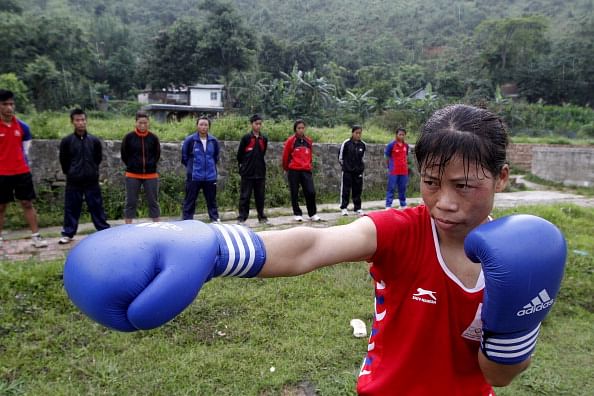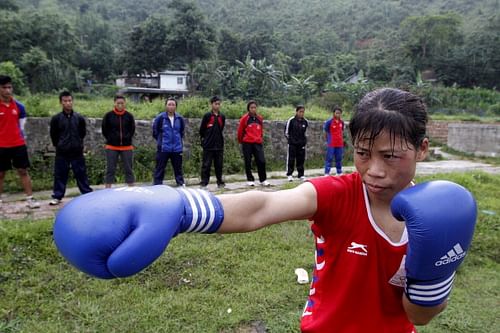
A place in your heart

Much has been said and written about performance of Indian athletes at Olympics. Many have tried to diagnose why a nation of over one billion fares so poorly at international sporting events. They particularly throw light on India’s lack-lustre performance in the past, how Indian athletes faltered at the world’s largest sporting event and few ascribe this failure to corrupt and inefficient government machinery. Before every Olympic Games the expectations of people of India from its participants are sky high. We often hear our sports minister project the number of medals the Indian contingent is going to win. India achieved its best medal overhaul (six medals) at the 30th Olympic Games concluded in August this year which saw participation from 204 counties in 26 sports. This has led to an even grander projection of medal hauls at Olympics in 2016 at Rio De Janeiro. The aim of this essay is to highlight why “We, the people of India” are equally responsible for the plight of our sportspersons, the institutional inefficiencies in our government machinery that has led to under performance and how latter is highly influenced by former.
Before I go any further, I would like to adduce the case of a forgotten hero that clearly illustrates we don’t care much for our sportspersons (other than cricket) who brought laurels to our country. Some of you might feel that the tragic hero that I am going to talk about is from the distant past and the condition of a sportsperson is much better today. I somewhat agree to this claim that they are better off today but the monetary support and recognition comes only after they have tasted victory in international events. When I scrutinize their state of being before their achievements, keeping in mind that we have had significant economic development in the recent past, it leads me to conclude that it hasn’t changed much. I will write more on this later but coming back to our forgotten hero, K D Jadhav was the first Indian to win an Olympic medal in an individual event at Helsinki in 1952 (ignoring Norman Pritchard, whom India considers as a British participant).
How significant was his achievement, particularly in Indian context, can be gauged from the fact that it took 44 years for another Indian to win an Olympic medal in an individual event. Yet, Jadhav remained largely obscure well after his death, barring a brief period after he won a bronze in Helsinki in freestyle wrestling. The accolades came in abundance but monetary awards still eluded him. This is where I feel India of 2012 is different from India of 1952. Nowadays, Olympic medallists are showered with monetary benefits and few lucky/popular ones even get to feature in advertisements. Jadhav would have never been able to even compete in 1952 Olympic as bureaucratic nepotism was all set to devoid him of this chance but a timely intervention from Maharaja of Patiala arranged for his participation in Olympic trials. Jadhav ran from pillar to post to obtain monetary assistance from government to fund his trip to Helsinki but to no avail. His friends and well-wishers funded his trip. At Helsinki, he was asked to fight his semi-final bout after 30 minutes of his quarter-final bout. According to rules there has to be a gap of 45 minutes before two successive bouts but there was no Indian official present to lodge protest. Jadhav spent his last few years in penury and died in a road accident.
As a result of dynamic inter-play between several factors, it so happens that the well-being (recognition, monetary awards) of sportspersons is closely related to the place they hold in our hearts. The more popular a sport, the more lucrative it appears and hence more the likelihood of it being pursued by youngsters. It is not a co-incidence that so many teenagers across India sweat relentlessly in the nets so that they can one day make it to the Indian Cricket team. The lure of money can help increase the talent pool of a sport. I have nothing against cricket but it has acquired such a place in our minds that it has negatively affected other sports. International fixtures of badminton, hockey (national sport), boxing etc. hardly get any television viewers and in some cases television coverage but even a Ranji Trophy cricket match gets a significant viewership.
The strength of cricket’s presence in our psyche can be gauged by the fact that television commercials are crawling with cricketers. How well a sport is received in a particular country is to some extent determined by how well it is doing in that sport. Its (especially for team sports) performance is determined by the talent pool it has which in turn is determined to some extent by the monetary benefits associated with it which, as shown earlier, depends on the space it has in our psyche. Thus, it forms a circle and the inter-play between different factors is evident. One way to make a sport more popular is to make its spectators understand the rules as without it, the spectators are clueless which will eventually lead to lack of interest. For example, most people I know were clueless about how points were being awarded in boxing matches. Boxer’s progress could only be known when the points were announced between rounds. During the rounds, people were only guessing as to who is leading and who is trailing. Spectators should be sensitized to the rules of sports other than cricket through television.
Most sportspersons in India are either from lower income families or upper income family, the middle class is almost absent. The reason for the aforementioned claim and the reason why we have very few entrepreneurs are somewhat along similar lines. We are risk averse and it is further accentuated by society looking down on failures. A steady income clerical job seems to be a better option. The very people who stay away from sports and who are apathetic to a sportsperson’s cause are the loudest when it comes to criticizing them for their poor performance.
The role of government as a medium to provide sporting infrastructure to its people has come under a lot of flak. Large scale mismanagement and corruption in Commonwealth Games has further reduced its credibility. As mentioned earlier, the government does look after winners of international events showering them with monetary rewards unlike earlier times. But the question is whether this assistance is because of Government’s commitment to uplift sports or is it because they are widely reported in media and hence are in public conscience which makes the Government act as it cannot appear to be indifferent. One way to check this is to look into the assistance which these sportsperson’s got before they won their medals. After a lot of searching on internet into this matter I discovered they are below satisfactory levels. The proposal to award Bharat Ratna to Sachin Tendulkar is along similar argument. Sachin cannot be awarded a Bharat Ratna on technical grounds as it is only awarded “for performance of highest order in any field of human endeavour.” But politicians across India supported this proposal because they knew this will be well received by the populace. Many a times, government officials have mistreated distinguished sportspersons and it has only been rectified after being reported in media. Its implications are that if we hope to win more medals in future sporting events, the media and the populace need to be vigilant.
Much has been said and written about performance of Indian athletes at Olympics. Many have tried to diagnose why a nation of over one billion fares so poorly at international sporting events. I will conclude by saying that if we wish to encourage youngsters of this country to take up sports and help India win international events, then we need to give them a place in our hearts.